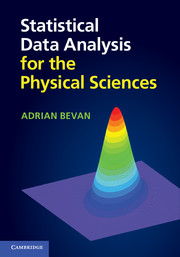Book contents
- Frontmatter
- Contents
- Preface
- 1 Introduction
- 2 Sets
- 3 Probability
- 4 Visualising and quantifying the properties of data
- 5 Useful distributions
- 6 Uncertainty and errors
- 7 Confidence intervals
- 8 Hypothesis testing
- 9 Fitting
- 10 Multivariate analysis
- Appendix A Glossary
- Appendix B Probability density functions
- Appendix C Numerical integration methods
- Appendix D Solutions
- Appendix E Reference tables
- References
- Index
2 - Sets
Published online by Cambridge University Press: 05 July 2013
- Frontmatter
- Contents
- Preface
- 1 Introduction
- 2 Sets
- 3 Probability
- 4 Visualising and quantifying the properties of data
- 5 Useful distributions
- 6 Uncertainty and errors
- 7 Confidence intervals
- 8 Hypothesis testing
- 9 Fitting
- 10 Multivariate analysis
- Appendix A Glossary
- Appendix B Probability density functions
- Appendix C Numerical integration methods
- Appendix D Solutions
- Appendix E Reference tables
- References
- Index
Summary
Before embarking upon a detailed discussion of statistics, it is useful to introduce some notation to help describe data. This section introduces elementary set theory notation and Venn diagrams.
The notion of a set is a collection of objects or elements. This collection can also be referred to as data, and the individual elements in the data can themselves be referred to as data (in the singular sense), or as an event or element. We usually denote a set with a capital letter, for example Ω. The element of a set is denoted by a lower case letter, for example either ω or ωi, where the latter explicitly references the ith element of the set. The elements of a set are written within curly braces ‘{‘ and ‘}’. For example we can write a set ΩBinary that contains the elements 1 and 0 as
This is called the binary set, as it contains the elements required to represent a binary system. The order of elements in a set is irrelevant, so we could write ΩBinary in an equivalent form as
If we want to express the information that a given element is or is not a part of a set, we use the symbols ∈ and ∉, respectively. For example we may write
to express that both 0 and 1 are elements of ΩBinary, but 2 is not an element of this set.
- Type
- Chapter
- Information
- Statistical Data Analysis for the Physical Sciences , pp. 12 - 19Publisher: Cambridge University PressPrint publication year: 2013



